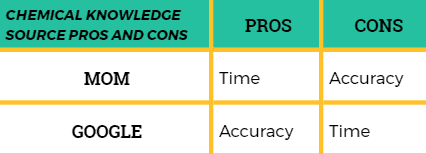If your lifestyle is anything like mine, finding the time to properly take care of your mental wellness can be a real challenge. After all, time is always of the essence, and it’s usually in short supply, especially since you are a real go-getter with a passion for being the best at whatever you do, whether at work or play. With all of those flights to catch, deadlines to meet, and loved ones in need of your full and undivided attention, there never seems to be enough time in the day to get it all done. And for most of us overachieving socially conscientious individuals, that usually means working long hard hours building our brands, vigorously networking with potential consumers, overcoming constant objections, and aggressively marketing our goods and services wherever and whenever the opportunity presents itself. First things first. What is mental wellness all about? It essentially refers to properly taking care of your mental health, which includes your emotional, psychological, and social well-being. It helps determine how you handle stress, relate to others, and make critical decisions in life. For the most part, it is greatly influenced by environmental life experiences and genetic predisposition. Nevertheless, although you may not be able to genetically erase a family history of depression nor substance abuse for that matter, I am confident that you do have the power to improve the environmental factors that impact your mental health by implementing a variety of practical strategies to do so. So, let’s take a look at some real-life practical examples of strategies that everyone should be able to work into even the most time-constricted schedule.
1. Talk to Someone
That sounds simple enough, right? Unfortunately, however, not all of us feel as though we are capable of opening up about our feelings, nor do we have the time to share them constructively with another person. In fact, many people find themselves stuffing their feelings away—deep within the emotional bedrock of underlying and unresolved childhood issues. Nevertheless, although some people have made a conscious decision to live their lives isolated from others, for the most part, human beings are generally social creatures—instinctually interacting with others, forming friendships, families, and larger communities. That’s one of the reasons why I strongly recommend working with a well-trained
professional counselor if you find it difficult to open up and express your feelings and emotions with others. No matter how automated and technologically advanced your life has become or how off-the-emotional grid you think that you are, there is just no substitute for the psychological benefits that human contact provides. At one point or another in our lives, we all need to know that our voices are truly being heard by another living and breathing person. Although social media enables us to connect with others anywhere in the world at lightning speed, likes, shares, and instant messaging can never take the place of an intimate human connection through face-to-face conversation. In fact, social media use has been shown to compound the effects of loneliness and depression.((NCBI:
Social Media Use and Its Connection to Mental Health: A Systematic Review)) The right professional counselor should be able to help you work through some of your most stubborn personal obstacles by providing feedback and validation to help you maintain mental wellness. And now with multiple on-line counseling platforms available to choose from, you don’t even have to leave your home to make it to your session on time.
2. Read a Book
I know what you’re thinking: Who has the time to read a book? However, studies have shown that reading significantly reduces symptoms of both depression and anxiety.((NCBI:
The introduction of a healthy reading scheme for people with mental health problems: usage and experiences of health professionals and library staff)) Reading is like taking your mind on an all-expenses-paid vacation to Tahiti, the Renaissance, the future, and beyond in less than an hour—all from the comfort of your own home. Reading essentially forces you to pay attention to detail, so you don’t miss any of the important plot twists in the story. So, go ahead, carefully grab a hot cup of cocoa, find the most comfortable and quiet spot in your home, put your phone on vibrate, and read a novel by your favorite author. Although you may not be able to finish it in one sitting, schedule enough time to make it through at least a chapter or two. More than likely, the more you read, the more engaged you will find yourself in the story, and therefore, the more you will want to continue reading to find out exactly what happens in the end.
3. Go for a Walk
I am neither a cardiologist nor a professional fitness trainer. However, I do know that I feel great after going for a walk. It’s an uplifting and invigorating experience that’s as good for your heart as it is for your mind. Going for a walk can help improve your mental wellness. As a matter of fact, studies show that walking helps
build self-esteem by reducing rates of obesity, stress, and ultimately, symptoms of both depression and anxiety.((News-Medical:
Does Walking Help with Mental Health Problems?)) The only equipment you really need is a comfortable pair of sneakers and a bottle of water so that you can stay properly hydrated. Once again, the only real obstacle getting in the way of being able to go for a brisk walk for most of us is having the time to actually do it. However, rather than waiting for the perfect time and place to go for a walk, I recommend that you just go for it! There are always going to be issues requiring your immediate, full, and undivided attention. There is no time like the present to start putting your mental health first by getting some good old-fashioned cardiovascular exercise. Nevertheless, if you are unable to go outside for a walk due to inclement weather or perhaps an unexpected quarantine due to a global pandemic, I recommend mapping out a trail in or around your home with as much open space as possible. You might even want to consider investing in a sturdy treadmill depending upon your budget.
4. Listen to Music
A few hundred years ago, the English playwright William Congreve wrote, “music has the power to enchant even the roughest of people.” No matter what genre of music you’re into, whether it’s by Metallica, Moby, Post Malone, Mozart, or Thelonious Monk, most of us would agree that music affects our mood and both our productivity and creativity. Studies have shown that listening to music helps people relax, reflect, and even recover from both mental illness and substance abuse.((Nature:
The effects of playing music on mental health outcomes)) If you happen to think that BTS is dynamite, Harry Styles is golden, or you just have the desire to listen to some classic U2 on a beautiful day, listening to your favorite song can actually improve your mood tremendously. So, if you’re really ready for some sound healing, I suggest that you close the windows, pull down the shades, crank up the volume, and just sing right along to your favorite song whether you know all the words or not.
5. Eat Right
I have to admit that I love to eat pasta, pancakes, and pizza. However, I also know that too much of a good thing—especially foods high in fat, sodium, preservatives, carbohydrates, and calories—can be very bad for you. Studies have shown that eating a well-balanced diet can improve your mental health. Researchers believe that there is a direct connection between what you eat, and how you feel about yourself.((Harvard Health Publishing:
Nutritional psychiatry: Your brain on food)) Diets rich in vitamins, protein, fiber, and antioxidants have been clinically proven to improve your overall health, thereby reducing symptoms of mental illness associated with chronic medical conditions, such as depression and anxiety. The idea is to eat foods that can strengthen your immune system, regulate digestion, and at the same time, elevate your mood while calming your nerves. Try to eat as healthy as possible to maintain mental wellness.
6. Keep a Journal
Although you may never sign a multi-million dollar book deal or write a best-selling novel, your life story is awesome because it’s yours! No one can document your thoughts and express your feelings better than you.
Keeping a journal helps you maintain a more accurate record of significant chapters in your life making it easier to process your feelings about those events when the time is right. But perhaps the most significant benefit that journaling provides is that it helps you declutter lingering thoughts in your mind, effectively freeing up precious headspace. How many times have you had so many things going on in your mind that you didn’t even know where to get started? Journaling your thoughts makes it easier to prioritize them in the headspace.
7. Sleep Well
Can you remember the last time you slept for a full 8 hours? Sleep is an essential part of maintaining the body’s equilibrium. It helps us essentially re-energize our physical, emotional, and cognitive batteries. When I don’t get enough sleep at night, I am usually cranky, lethargic, and significantly less productive the following day. Perhaps you have experienced the same thing? Research has shown that both sleep deprivation and disturbed patterns of sleep can lead to a whole host of mental health issues, such as anxiety, depression, and even psychotic episodes with delusions and hallucinations.((Harvard Health Publishing:
Sleep and mental health)) One of the easiest ways to improve the quality of your sleep is to try to stay as active as possible during the day and then wind things down in the evening. I don’t know about you, but it’s super hard for me to fall asleep with a mind full of unresolved tasks. Consider practicing mindful meditation before going to bed so that you can release all of your stress by actively strengthening your spiritual energies. Although you can speak with your physician about prescription sleep aids, you may want to explore more holistic natural remedies first, such as camomile tea and melatonin supplements. Finally, try to stay as far away from caffeine, nicotine, sugar, and over-stimulating activities, such as video games at night if possible. Having a good night's sleep is essential to maintaining mental wellness.
Final Thoughts
No matter where you are from or what you do for a living, I know everyone would agree that having a clear mind is an essential part of being able to make decisive and prudent decisions. Similar to servicing your vehicle to keep it running at peak performance, you should take the time to periodically tune up your mind with some simple strategies to improve your mental wellness.
More Articles About Mental Wellness

 Rocky star and writer, Sylvester Stallone was so poor at one point that he had to sell his dog for $40 just to buy food. After receiving two Oscar bids for his script and performance in Rocky, he was able to buy the dog back from the new owner for $15,000!
Rocky star and writer, Sylvester Stallone was so poor at one point that he had to sell his dog for $40 just to buy food. After receiving two Oscar bids for his script and performance in Rocky, he was able to buy the dog back from the new owner for $15,000!
 If you thought Thomas Edison's failures were bad, let me introduce you to James Dyson, the famous inventor of the Dyson vacuums you see all over television. Dyson developed over 5,000 failed prototypes before finding the bagless vacuum brand. Not only that, he invested his entire savings account into his prototypes over fifteen years! Luckily, the bagless vacuum worked and now Forbes estimates James Dyson's net worth at over $6 billion.((Forbes: Singapore-Bound Billionaire James Dyson Plans $3.6 Billion Move Into Batteries And Robotics After Electric Car Failure))
If you thought Thomas Edison's failures were bad, let me introduce you to James Dyson, the famous inventor of the Dyson vacuums you see all over television. Dyson developed over 5,000 failed prototypes before finding the bagless vacuum brand. Not only that, he invested his entire savings account into his prototypes over fifteen years! Luckily, the bagless vacuum worked and now Forbes estimates James Dyson's net worth at over $6 billion.((Forbes: Singapore-Bound Billionaire James Dyson Plans $3.6 Billion Move Into Batteries And Robotics After Electric Car Failure))
 When comparing options for solving your problem in practice, it quickly becomes clear that knowing the context of your problem is crucial. If you know that you're looking to understand the chemical formula for water because you're going to have a test on this in school next week, then you might accept the fast and high accuracy response from your mother. But if you're going to hold a speech in front of the nation as the president of the United States, you likely will want to invest more time to get an answer that is definitely accurate. This is an example of why you need to fully understand the context of the problem you're trying to solve before looking at methods for solving it. Thinking strategically allows you to understand the context of the problem. Pros/cons, revenues/costs, rewards/risks, benefits/side effects—all of these are terms that describe the positive and negative aspects of solutions or tools that can be used to solve problems. In some circumstances, the problem is so small that it would take more time to create a pro/con list on paper or to create a clear definition of why you want to solve this problem, which is when a clear and sharp mind comes in extra handy.
When comparing options for solving your problem in practice, it quickly becomes clear that knowing the context of your problem is crucial. If you know that you're looking to understand the chemical formula for water because you're going to have a test on this in school next week, then you might accept the fast and high accuracy response from your mother. But if you're going to hold a speech in front of the nation as the president of the United States, you likely will want to invest more time to get an answer that is definitely accurate. This is an example of why you need to fully understand the context of the problem you're trying to solve before looking at methods for solving it. Thinking strategically allows you to understand the context of the problem. Pros/cons, revenues/costs, rewards/risks, benefits/side effects—all of these are terms that describe the positive and negative aspects of solutions or tools that can be used to solve problems. In some circumstances, the problem is so small that it would take more time to create a pro/con list on paper or to create a clear definition of why you want to solve this problem, which is when a clear and sharp mind comes in extra handy.